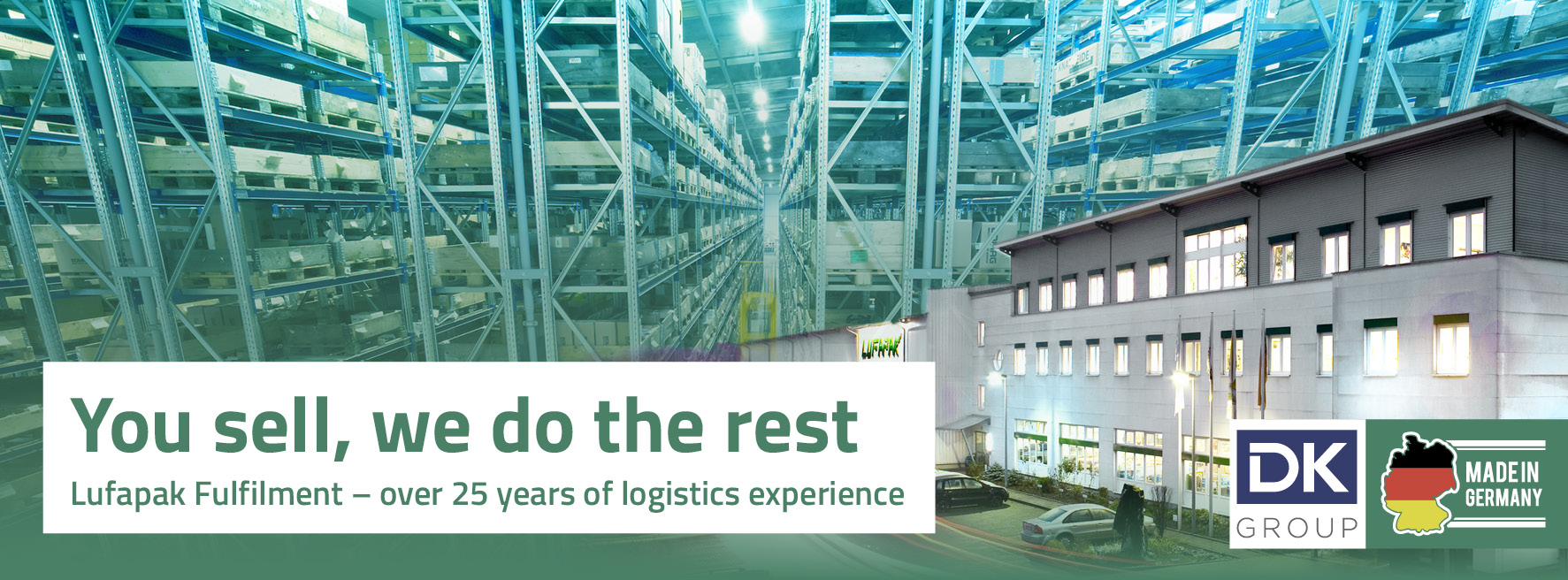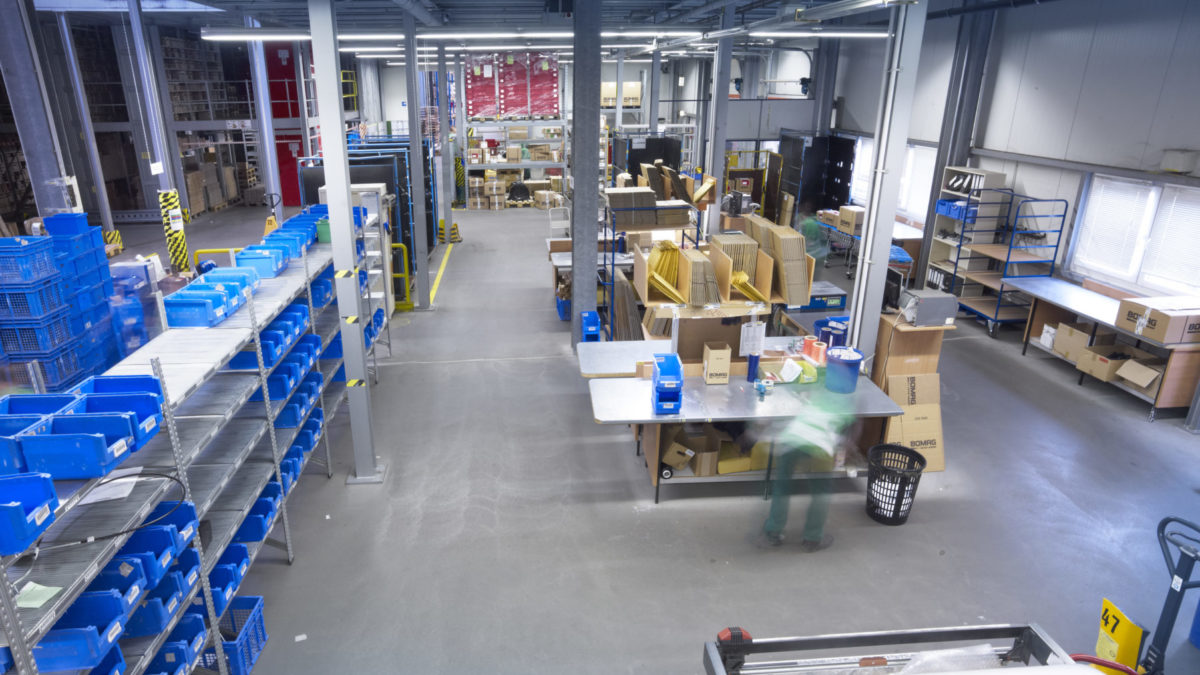sales@lufapak.de +49 2631/384-0 Contactform
Warehouse logistics is a crucial aspect for the efficiency and profitability of companies in various industries. One of the main factors that determines the efficiency of warehouse logistics is the racking system used. Flow racking plays a special role here. As an efficient and space-saving storage solution, it can make the difference between an average and an outstanding logistics system.
In this blog post, we want to take a closer look at the topic of flow racking. We will discuss what exactly flow racking is, the benefits it offers, how it is used in different industries and how to choose the right flow racking for your specific needs. Choosing the right racking system can have a significant impact on the efficiency and productivity of a warehouse, so it’s worth taking a closer look at this topic.
The most important facts at a glance
- Flow racks are used in various industries such as retail, automotive, food and logistics.
- They help to optimize warehousing by enabling an efficient flow of goods and facilitating access to individual items.
- When choosing a flow rack, factors such as size, material flow, type of products and safety standards should be considered.
- The cost of flow racking can vary greatly and depends on factors such as size, material, number of levels and complexity of the system.
What is a flow rack?
A flow rack is a special storage system based on the principle of “First-In-First-Out” (FIFO) goods movement. It is a storage solution designed to maximize storage capacity while facilitating access to stored goods.
A flow rack consists of a series of inclined chutes or channels arranged at different levels. Each channel is loaded from one side of the rack – the putaway side. The goods then roll by gravity to the other side of the rack – the retrieval side.
How a flow rack works
The way a flow rack works is quite simple: when goods are placed in a channel on the storage side, they roll by gravity to the retrieval side. Since the oldest goods (the goods stored first) are always the first to be available for removal, the FIFO principle is guaranteed. This is particularly useful for goods with an expiry date, such as food or medicines.

By using gravity to move goods, a flow rack reduces the need for manual labor and mechanical equipment. This can increase efficiency and reduce operating costs. In addition, flow racking enables high storage density as it requires fewer aisles than conventional racking systems.
Flow rack advantages at a glance
Flow racks offer a variety of benefits that make them an attractive option for many types of warehouse operations. Here are some of the most notable benefits:
Efficiency and space optimization
Flow racks are known for their high efficiency and optimal use of space. They allow for high fill levels and improved space utilization compared to traditional racking systems. As the goods are moved by gravity, many aisles are eliminated, resulting in more compact block storage and increased storage capacity.
First-In-First-Out (FIFO) goods movement
Another key advantage of flow racks is the ability to implement the FIFO principle. This principle means that the goods stored first are also the first to be removed. This is particularly advantageous for goods with a limited shelf life, such as food or medicines.
Minimized goods turnover
Flow racks significantly reduce goods turnover, as the goods roll directly from the entrance to the exit of the rack. This minimizes the likelihood of errors and damage that can occur due to the frequent transfer of goods. It also improves the material flow, as the “First-In-First-Out” (FIFO) principle is guaranteed.
The different types of flow racks
There are different types of flow racks that are tailored to different requirements and storage conditions. Some of the most common types are
- Pallet live storage racking
Pallet flow racks are mainly used for the storage of palletized goods. They are particularly suitable for companies that need to store a large number of pallets with the same or similar items. These racks are very robust and can carry heavy loads. They are ideal for storing food, beverages and other bulk goods.
- Case flow racking
Crate flow racking is ideal for storing smaller items in crates or containers. They are often found in sectors such as retail, electronics and automotive, where they help to optimize the flow of goods and facilitate access to individual items.
- Carton flow racks
Carton flow racks are specifically designed for the storage of cartons or small parts in pick-and-pack environments. They are ideal for companies that have a wide range of SKUs (Stock Keeping Units) and require efficient order picking.
Use of flow racks in various industries
Flow racks are used across all industries and help to optimize warehousing in various business areas. Here are some examples of industries and businesses that use flow racking effectively:
- Food industry
The food industry often uses flow racks to store perishable products. The first-in-first-out principle ensures that older products are sold before newer ones, minimizing the risk of spoilage.
- Retail
In retail, flow racks are often used to store a variety of products, from small parts to large pallets of bulk goods. They help to optimize the flow of goods and facilitate access to individual items.
- Automotive industry
The automotive industry uses flow racks to store components and parts. They enable efficient warehousing and quick access to the required parts, which shortens production times.
- Logistics and distribution
In logistics and distribution, flow racks are used to enable efficient storage and movement of goods. They support the fast picking and packing of orders, which leads to improved customer satisfaction.
Choosing the right flow rack is crucial
Choosing the right flow rack can have a significant impact on the efficiency and productivity of your warehouse. Here are some considerations to take into account when choosing a flow rack:
Size and space
The size of the racking and the space available in your warehouse are crucial factors. You need to ensure that the racking will fit in your storage space while leaving enough room for safe and efficient operation.
Material flow
Check the material flow in your warehouse. For goods that need to be moved according to the FIFO principle (First-In-First-Out), flow racks are ideal. But if you need the LIFO principle (Last-In-First-Out), other types of racking would be more suitable
Type of products
The type of products you store will also influence your choice of racking. For heavy or large-volume goods, robust pallet flow racks are more suitable, while crate or carton flow racks are ideal for smaller items.
Safety and compliance
Safety is another important aspect when choosing a flow rack. The racking should be stable and robust and comply with all applicable safety standards. Also make sure that it complies with local building and fire regulations.
Finally, you should also consider the manufacturer of the shelving. Choose a reliable manufacturer with a good reputation to ensure you get a high quality and durable product.
Flow rack costs – what you need to expect
The cost of flow racks can vary greatly and depends on various factors, such as the size, material, number of levels and complexity of the system. For this reason, we cannot make a clear statement on this.
Concluding thoughts
Flow racks play an essential role in warehouse logistics. They not only enable the efficient storage and movement of goods, but also support the fast picking and packing of orders. This leads to improved customer satisfaction and increased operational efficiency. Therefore, investing in a well-designed flow rack system is a worthwhile decision for any company looking to optimize its warehouse logistics.
Contact us now and get advice


